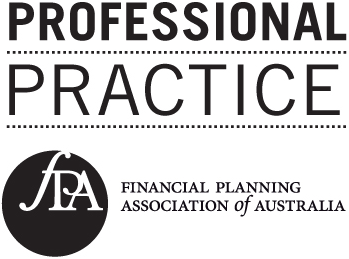Wanted: More voluntary super contributions
Are you contributing enough to super? Recent research highlights the reality that most members of large super funds do not make voluntary contributions.

How Australia Saves 2019, a collaboration between Vanguard and three major funds examine how over 2.3 million members of these funds managed their super, including contributions, over the three years to June 2018.
In 2017-18, just 12 per cent of members receiving compulsory superannuation guarantee (SG) contributions made additional voluntary contributions – an almost identical percentage over the three years covered by the research.
This underlines the importance of Australia's SG contributions to retirement savings as well as the need for members to consider making voluntary contributions when possible. (The current SG rate, payable by employers, is 9.5 per cent of salaries.)
How Australia Saves reports that 8 per cent of working members receiving compulsory contributions into these funds during 2017-18 made salary-sacrificed contributions. Just 3 per cent of members also made non-concessional (after-tax) contributions while 1 per cent made both non-concessional and salary-sacrificed contributions.
Members making voluntary contributions in addition to compulsory contributions had a much higher median age, income and length of fund membership than members relying solely on compulsory contributions.
A message from this research is that super fund members should understand what steps they can take to boost their super savings – depending upon their personal circumstances.
Salary-sacrificed contributions
For most employees, perhaps the most straightforward way to save more in super is to begin making salary-sacrificed contributions. And members already making these contributions can consider whether to "sacrifice" more into super each pay day if affordable.
As with all concessional (before-tax) contributions, salary-sacrificed contributions are not taxed at a member's personal tax rate but are taxed at 15 per cent upon entering a super fund. Typically, this is a valuable tax savings.
Making salary-sacrificed super contributions is a simple and disciplined way to save. First confirm the impact of salary sacrificing with your employer (in some instances, it may reduce the amount of SG your employer is obligated to pay on your behalf) and if it suits, tell your employer how much you want to regularly contribute. And think about increasing the amount of the regular contribution at least once a year or whenever you get a pay rise.
Keep in mind that the annual concessional contributions cap for all eligible super fund members is currently $25,000. (This cap covers compulsory SG contributions, salary-sacrificed contributions, and personally-deductible contributions by eligible self-employed individuals and investors.)
After-tax contributions (including inheritances)
Astute super members look for opportunities to contribute more to super as non-concessional (after-tax) contributions – may be after they receive an inheritance or sell a non-super investment such as a rental property.
Being ready to make extra personal contributions whenever extra money becomes available is a smart approach to quickly increasing retirement savings.
Again, take care not to overshoot the contribution caps. (The standard annual non-concessional contributions cap is $100,000 for 2018-19. Fund members under 65 have the option of bringing forward non-concessional contributions to $300,000 over three years, depending upon their total super balance. The latest Federal Budget proposes to increase the age limit for bring-forward contributions from 2020-21.)
Written by Robin Bowerman
Head of Corporate Affairs at Vanguard.
09 April 2019
Latest eNewsletters
Hot Issues
- AI exuberance: Economic upside, stock market downside
- Becoming a member of an SMSF is easy, but there are other things that need to be considered
- Investment and economic outlook, November 2025
- Move assets before death to avoid tax implications
- ATO issues warning about super schemes
- 12 financial tips for the festive season and year ahead
- Birth date impacts bring-forward NCCs
- Countries with the largest collection or eucalyptus trees
- How to budget using the envelope method
- Accountants united in support for changes
- Investment and economic outlook, October 2025
- Stress-test SMSF in preparation for Div 296
- Determining what is an in-house asset can help determine investment strategy
- Beware pushy sales tactics targeting your super
- Call for SMSF ‘nudge’ in DBFO package
- How Many Countries Divided From The Largest Empire throughout history
- How changes to deeming rates could affect your pension payments
- Five building blocks that could lead to a more confident retirement
- Investment and economic outlook, September 2025
- Caution needed if moving assets to children
- Evolution of ‘ageless workers’ sees retirement age rise
- Younger Australians expect more for their retirement
- New NALE guidance still has issues


